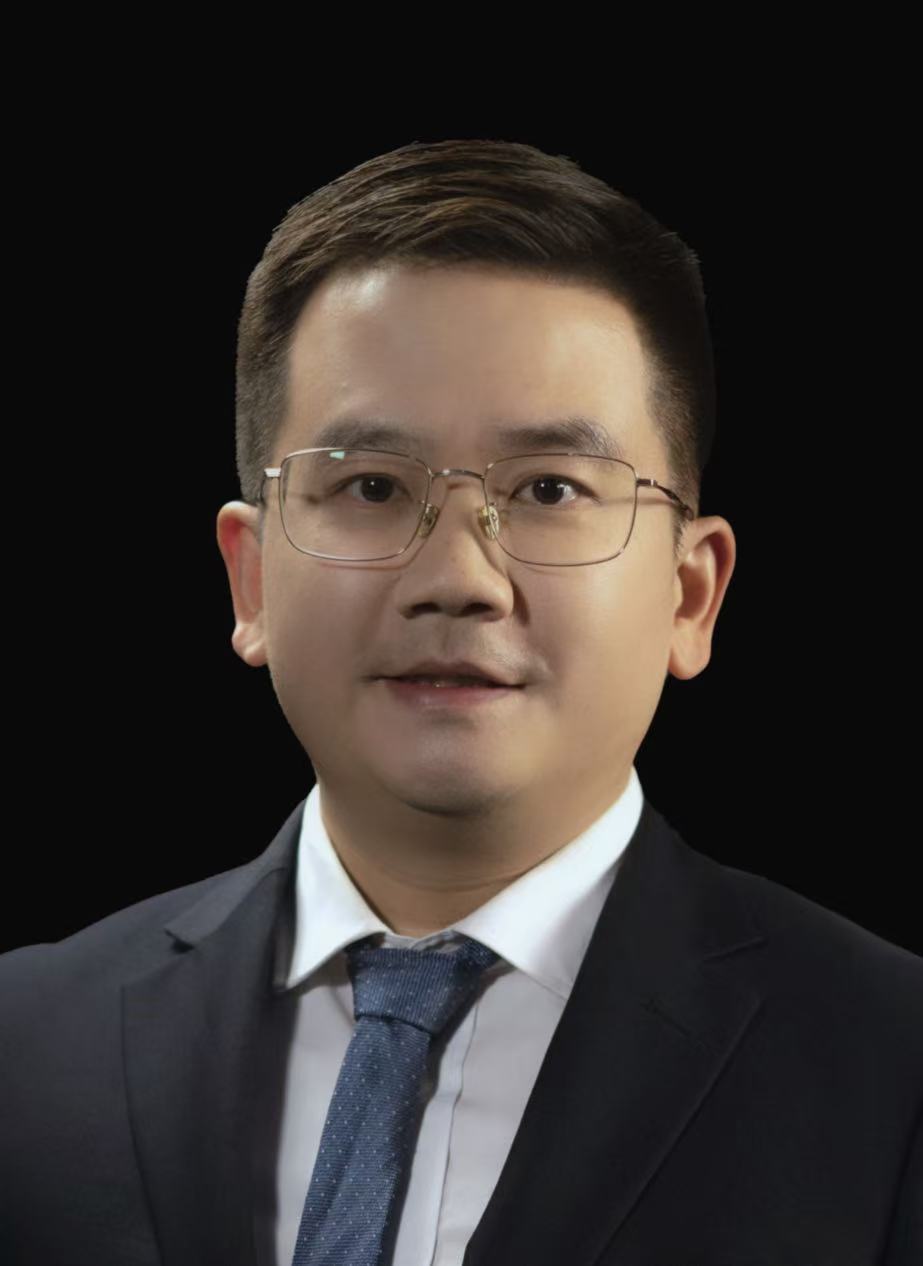Invited Speaker
Invited Speaker Ⅰ

Prof. Filippo Sanfilippo
University of Agder, Norway
Brief Introduction: Filippo Sanfilippo holds a PhD in Engineering Cybernetics from the Norwegian University of Science and Technology (NTNU), Norway, with a focus on intelligent control approaches for robotic manipulators. His research focus on Human-Robot Teaming (HRT), which includes robotics, wearables, human-robot teaming, artificial intelligence, and control theory. He is currently appointed as a Professor at the Faculty of Engineering and Science, University of Agder (UiA), Grimstad, Norway. He carries a vast experience in participating in European research programs and various national projects from the Research Council of Norway (RCN). He is an IEEE Senior Member. He is the former Chair of the IEEE Norway Section. He is the Chair of the IEEE Robotics and Automation, Control Systems and Intelligent Transportation Systems Joint Chapter. He is the Chair of the Norway Section Life Members Affinity Group. He is currently a member of the IEEE Region 8 Chapter Coordination Committee, of the Conference Coordination Committee, of the IEEE Public Visibility Committee, of the IEEE R8 Awards and Recognitions Committee, and of the Professional and Educational Activities Committee. He is also the former Treasurer of the Norsk Forening for Kunstig Intelligens (NAIS), the Norwegian Association for Artificial Intelligence. He has authored and co-authored several technical papers in various journals and conferences. He is a reviewer for several international conferences and journals.
Speech Title: Human-Robot Teaming (HRT)
Abstract: Human-robot interaction (HRI) is the study of how humans and robots interact, as well as how to develop robots that can adapt to human behavior. Human-robot cooperation (HRC) expands on this by creating new approaches and technologies that allow robots to collaborate with people in shared environments. The field of human-robot teaming (HRT) goes one step further, by studying how to create teams of humans and robots that can work together effectively and efficiently to achieve common goals. In this talk, an overview of the possible real-life applications for HRT will be presented.
Invited Speaker Ⅱ

Dr. Shiling Zhang
State Grid Chongqing Electric Power Company Electric Power Economy and Technology Research Institute
Brief Introduction: Developed ultra-high voltage dry-type converter transformer bushings and SF6 gas-insulated wall-penetrating bushings, which have been applied in China's ultra-high voltage AC and DC power grid projects. Led the development of GIS fault detection sensing technology and systems, winning the Outstanding Innovation Achievement Award at the International Innovation and Entrepreneurship Expo. Awarded the title of Outstanding Science and Technology Worker by the Chongqing Electrotechnical Engineering Society.
As the first author, he has published over 90 SCI/EI-indexed papers in domestic and international journals and top-tier academic conferences, including 18 articles in Peking University's Chinese Core Journals. His innovative achievements have earned nine provincial and ministerial-level awards, such as the First Prize for Scientific and Technological Progress in Chongqing and the Special First Prize from the China Water Resources and Electric Power Quality Management Association. Additionally, he has filed one international patent application, secured 20 national invention and utility model patents, and obtained 18 software copyrights. He has delivered over 20 conference presentations internationally and domestically. As the principal investigator, he has led two provincial/ministerial-level foundational research projects and three scientific research projects for the State Grid Corporation of China headquarters.
Speech Title: Numerical Calculation and Structural Optimization of Multi-physical Field Coupling for Basin Insulator
Abstract: To meet the proposed requirements of high voltage and high current transmission, the operation performance of basin insulators needs to be analyzed in depth in field of multi-physical field coupling simulation, and the topology of basin insulators should be optimized based on results of the multi-physical field coupling simulation. Firstly, electrical-thermal-mechanical performance parameters of basin insulator bulk materials are obtained through experiments. Based on experimental data, the multi-physical field for calculating electric-thermal-mechanical system is proposed. The non-linear relationship between dielectric constant, tangent value of loss angle, thermal conductivity and thermal expansion coefficient and temperature is taken into account in the calculation of a single physical field. A three-dimensional finite element model of a basin insulator is further established to decouple the electric field, temper-ature field and stress field. RBF neural network is used to learn the simulation data of electric-thermal-mechanical multi-physical coupling field, so as to realize the non-linear inversion of the optimal structural parameters of the basin and obtain the optimal structural parameters of the basin insulator. The application results show that the decoupling simulation of basin insulators can be effectively realized by the multi-physical field finite element method. The maximum electric field strength of the basin body is also near the central conductor.
Invited Speaker Ⅲ

Yong Li
State Grid Chongqing Electric Power Company Electric Power Science Research Institute
Brief Introduction: Li Yong holds a master’s degree from Chongqing University and is a senior engineer. He serves as Deputy Director of the Equipment Condition Assessment Center at State Grid Chongqing Electric Power Research Institute, Secretary-General of the Substation Operation and Maintenance Subcommittee of the IEEE PES Substations Committee (China), member of the Electric Power Micro-Intelligent Sensing Standardization Technical Committee of the China Electricity Council, and member of the Chinese Society for Electrical Engineering. He has long been engaged in technical research and key problem tackling in the fields of transmission and transformation equipment condition detection and assessment, as well as professional technical management of high-voltage switchgear. He has led and participated in more than 30 research projects at various levels, including those of the Ministry of Emergency Management, State Grid Corporation of China, and Chongqing Municipality. He has received over ten provincial and ministerial-level science and technology awards, published 13 papers in high-level domestic and international journals, been granted 12 patents, and led the formulation and revision of 15 State Grid corporate standards.
Speech Title: A Novel Detection Technology for Mechanical Characteristics of High-Voltage Circuit Breakers Based on Electromagnetic Coupling and Machine Vision
Abstract: To address the challenges associated with traditional methods for testing the mechanical characteristics of circuit breakers—such as the need to install specialized fixtures, complex operations, potential damage to the circuit breaker, and the risk of induced electricity when removing grounding wires—State Grid Chongqing Electric Power Research Institute has developed a novel detection technology for mechanical characteristics of high-voltage circuit breakers based on electromagnetic coupling and machine vision. This device uses a miniature camera to capture video of the circuit breaker's operating mechanism movement, enabling non-contact measurement of its speed characteristics. Additionally, it measures opening and closing time characteristics without removing the grounding wire by injecting high-frequency induced current, thereby improving test safety. The technology has been applied in regions such as Chongqing, Anhui, Hunan, and Shandong, where it has demonstrated a fourfold increase in maintenance efficiency compared to traditional testing devices.
Invited Speaker Ⅳ

Prof. Samir Ladaci
Ecole Nationale Polytechnique, Algeria
Brief Introduction: Samir Ladaci obtained the State Engineer degree in Automatics in 1995 from the National Polytechnic School of Algiers and the Magister degree in Industrial Automation from Annaba University, Algeria in 1999. He obtained his Science Doctorate and Habilitation degrees from the department of Electronics, Mentouri University of Constantine, Algeria, in 2007 and 2009 respectively. His was a visiting researcher at IRCCyN (now LS2N), CNRS Nantes, France from 2006 to 2008, and has many collaboration projects with different research teams in France, Germany, Tunisia and Italy. From 2001 to 2013 he worked at the Department of Electrical Engineering at Skikda University, Algeria, as an Associate Professor. And from 2013 to October 2021 he was a full professor at the National Polytechnic School of Constantine, since that he joined the National Polytechnic School of Algiers. He has published more than 250 papers in journals and International conferences, many book chapters and co-edited a book and supervises many PhD theses (15 already defended with success). His current research interests include Fractional order Systems and Control, Adaptive Control, Robotics, Renewable Energy, Nonlinear and chaotic systems, Biomedical systems.
Speech Title: Fractional Order Control Of Robot Manipulators For Manufacturing Industry Advancement
Abstract: Robotic manipulators are electronically controlled mechanisms consisting of multiple segments that perform tasks by interacting with their environment. They can perform repetitive tasks at speeds and accuracies far exceeding human operators. They can move or handle objects automatically depending upon the given number of DOF. Technological advancements have greatly improved robotic manipulators’ accuracy and precision, thus allowing them to automate new applications such as automated 3D printing. Robotic manipulator automation makes manufacturing processes more efficient, reliable, and productive. As a result, considerable attention has been given to modelling the robotic manipulators and designing practical controllers that are easy to implement and provide optimal controlled performance. Fractional order operators have proved to be a very efficient tool for modeling and control design of industrial systems. Since the famous fractional order PID proposed by Podlubny and the CRONE control proposed by Oustaloup in the 1990s, a huge number of control technique using this mathematical tool have been developed so far. Among them, fractional adaptive control has demonstrated a very impressive performance and robustness improvement. In this talk we will present some recent application of fractional order adaptive control schemes, mainly based on MRAC to robot manipulators in indutrial environment. The proposed talk invites more interest and contribution to this field in order to gain in performance and efficcency and realize the top of Industy 4.0.
Invited Speaker Ⅴ

Prof. Priti Srinivas Sajja
Sardar Patel University, India
Brief Introduction: Dr. Priti Srinivas Sajja (b. 1970) is a Professor and Director of the PG Department of Computer Science & Technology at Sardar Patel University, India. She earned her M.S. in 1993 and Ph.D. in 2000, both in Computer Science from the same university. She specializes in Artificial Intelligence, Machine Learning, and Systems Analysis & Design, and has authored several international books with a total of 243 publications. She served as Principal Investigator on a major UGC-funded research project and on an Indo-Russian DST (Department of Science & Technology) project. She has mentored numerous PhD scholars, too. She has rendered her expertise as a resource person for AICTE and NAAC, contributing to quality and accreditation processes in India. She also held a key state-government role as Director of the Gujarat University Granth Nirman Board, a committee formed by the Governor on the recommendation of the Chief Minister of the state in India. She is a recipient of multiple awards — notably the Sardar Patel Research Award (five time) and a Lifetime Achievement Award from the National Foundation for Entrepreneurship Development.
Speech Title: Hybrid Fuzzy Applications in Various Domains
Abstract: This is the era of intelligence and the Artificial Intelligence and Machine Learning (AIML) based techniques are ubiquitously used in various domains. However, there is no single technique that would be effectively used for the problem solving and decision making. This leads to the hybridization of various techniques. In this brief talk, fuzzy systems are introduced and hybridized with various other techniques such as deep learning models, evolutionary systems, etc. stating their applications and advantages. Domains such as education, manufacturing & control, consumer modelling, healthcare, agriculture, banking & finance, cyber security, defence, etc. are explored and brief demonstration of how the hybrid fuzzy system works is discussed here. The talk concludes with advantages and possible research contributions in the domain.
